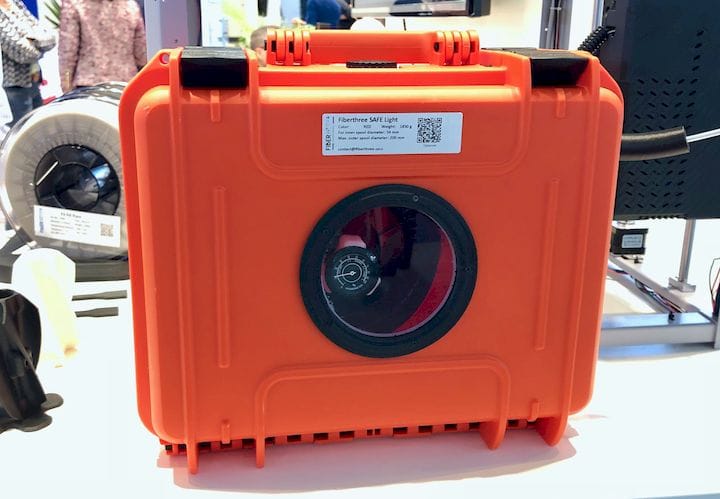![Fiberthree’s filament dry box [Source: Fabbaloo]](https://fabbaloo.com/wp-content/uploads/2020/05/image-asset_img_5eb09d1c1d9b6.jpg)
Fiberthree is a German company producing several 3D printing products, but focusing mainly on materials.
The company, which started in 2015, currently offers filament products including a couple of carbon fiber – nylon mixes, as well as pure PA. While I’m sure these are very fine products, we’re a bit more interested in their other offerings.
One of their products is a dry box. A dry box is a special container designed to hold a misbehaving material secure against ambient environmental conditions. This is particularly important for nylons, as they have the unfortunate property of instantly absorbing considerable amounts of humidity from the air. This absorbed moisture essentially wrecks subsequent 3D prints, as the water boils and bubbles as it hits the hot end, creating gaps and blobs as well making a terrible mess of the layer adhesion.
Thus you must store your nylon filament in a special container that prevents absorption of humidity until just before printing.
There are several ways to accomplish this, and there are even multiple sets of instructions and videos available on how to make “dry boxes” out of leftover plastic containers, IKEA detritus, or other junk. Meanwhile, Fiberthree produces a professional dry box specifically designed for storage of nylons, which, as you might recall, are their entire materials line.
The dry box not only stores the filament, but allows safe transport from location to location. It can also be used to store filament during prints, as the box includes a small port to allow filament to spool outwards.
Their dry box comes in two sizes to accommodate either 1kg or 2kg spools, and include features to avoid filament tangling. It seems that the box has a “return brake” to prevent loose filament from falling back into the box loose and slipping under other filament circuits.
![A carbon fiber 3D print plate [Source: Fabbaloo]](https://fabbaloo.com/wp-content/uploads/2020/05/fiberthree-plate-1_result_img_5eb09d1c7b400.jpg)
The other interesting product from Fiberthree is a 3D print plate that’s made from carbon fiber. Normally print plates are glass, spring steel or magnetically attached thick rubber, all which require an adhesive coating to make prints stick.
However, I’d never seen a carbon fiber print plate until shown one by Fiberthree. They say it provides sufficient adhesion, just like other 3D print plate solutions, and can be heated up to 80C. To remove completed prints, you need only wait until the plate cools down, and the print can be easily released then.
Why carbon fiber print plates? The answer is simple: no warping of the plate. It’s as stiff as you can get.
It’s carbon fiber, after all.











